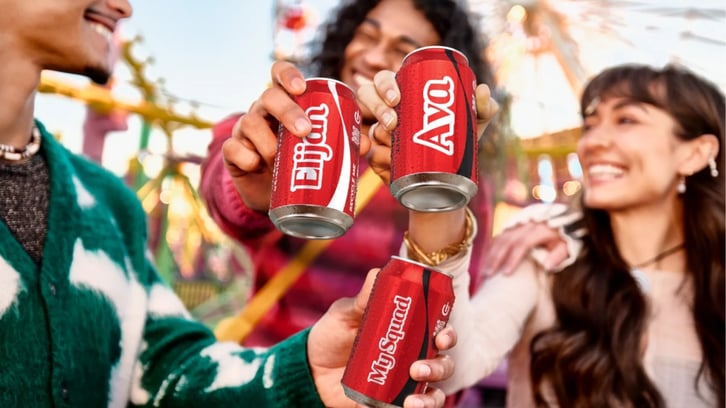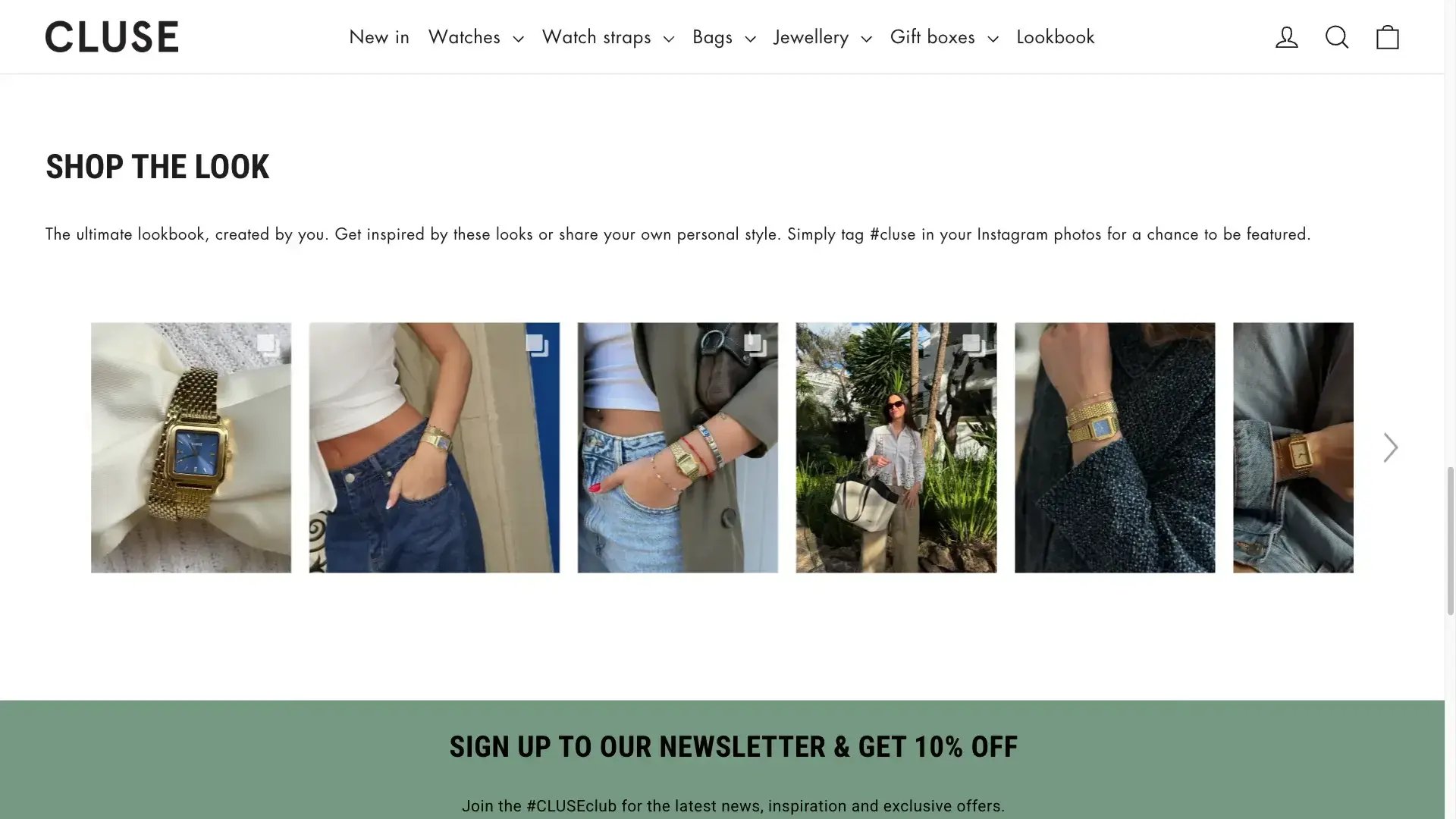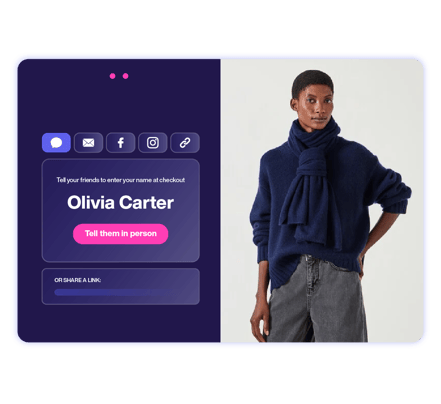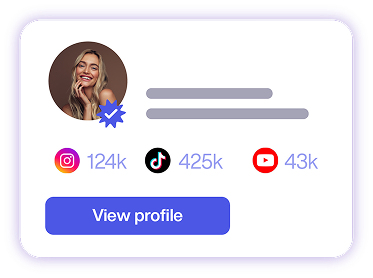11 Word-of-Mouth Marketing Examples That Turned Buzz into Growth

As consumers, we are bombarded by so many ads in both the online and offline worlds that it can be hard for brands to cut through the noise. But there is one form of marketing, as authentic as it is ancient, that is as effective as it has always been: word-of-mouth.
From friends recommending a new brand over coffee to customers tagging products on Instagram, the everyday conversations we have with each other shape buying decisions more than any billboard or banner ad ever could. In fact, people are far more likely to trust a recommendation from someone they know than any form of paid advertising.
In this article, we’ll explore why word-of-mouth remains a powerful tool for brands and retailers, the strategies that make it thrive in 2025, and real-world examples that show why it’s essential to incorporate customer advocacy into your marketing strategy.
What is word-of-mouth marketing?
Word-of-mouth marketing is simply when your customers share the positive experiences or opinions they have with others in everyday conversations. This could be to recommend a brand, product, or service, and it can happen face-to-face or via online communication. Unlike paid ads, it’s authentic, spontaneous and organic.
Whether it’s chatting with a friend, posting on social media, or mentioning your brand in passing, these moments are extremely valuable but often overlooked as a marketing strategy.
Why word-of-mouth marketing matters for retailers and brands
For retailers and brands, word-of-mouth is an affordable and effective strategy for driving ROI and lasting growth. Recommendations from friends and family remain the most trusted form of advertising, and can influence purchase decisions far more effectively than an expensive and overly polished ad campaign.
On top of that, referred customers are more valuable: they tend to convert faster, spend more, and remain loyal to your brand. And with such fierce competition for customer attention, leveraging these authentic thoughts and feelings helps you get noticed, build credibility, and grow cost-effectively.
Simply put, if you’re not harnessing word-of-mouth, you could be neglecting an acquisition tool that has incredible potential for your brand.
Key benefits of word-of-mouth marketing
Word-of-mouth can deliver both new customers and lasting value. From increasing loyalty to lowering acquisition costs and building communities, the benefits can extend far beyond one single referral. Here are the key benefits of word-of-mouth marketing.
Instils brand loyalty
When your customers feel moved to recommend your brand, it’s a good sign that they have a deep emotional connection with it. Advocacy shouldn’t just be transactional; it should happen when your product or service has had a genuine impact on someone’s life. Word-of-mouth referral is the true sign of loyalty.
These authentic recommendations inspire others to try your brand and reinforce loyalty in your existing customers.
Cost-effective customer acquisition
Traditional advertising can be expensive and often has diminishing returns. In contrast, word-of-mouth is fuelled by the enthusiasm of satisfied customers, an affordable and naturally occurring resource.
The cost of acquiring new customers through referrals is usually significantly lower than through paid marketing channels, although the quality, measured by metrics such as lifetime value (LTV), is substantially higher.
Builds a community of brand advocates
Happy customers don’t just make one referral, they keep spreading the word. Over time, these organic recommendations grow into a self-sustaining community of loyal fans with exponential reach.
This sense of belonging is crucial to the success of your word-of-mouth strategy. When customers see themselves as part of a like-minded group, their connection to your brand deepens, which can encourage ongoing engagement and reduce customer churn.
9 top word-of-mouth marketing strategies in 2025
The brands that thrive are the ones that can harness the most value from everyday customer conversations. The most effective strategies blend authenticity with shareability and foster communication across multiple channels. Here are the top word-of-mouth marketing strategies in 2025:
1. Experiential marketing
Experiences that inspire or excite people are one of the most effective ways to encourage them to talk about your brand. When you create something memorable (whether it’s a pop-up shop, live event, or interactive campaign), you give your customers stories worth sharing.
Experiences like Nike’s community runs, Glossier’s pop-up stores, or Red Bull’s extreme sports stunts aren’t just events, they’re a starting point for countless conversations that bridge online and offline spaces.
2. Social media amplification
Social platforms remain one of the most effective channels for word-of-mouth marketing. By encouraging customers to tag your brand, share their experiences, or repost branded content, you create a ripple effect that extends far beyond your own audience.
A single mention can initiate conversations across multiple networks, reaching friends-of-friends who view the endorsement as authentic and trustworthy. Campaigns that use branded hashtags, challenges, or “tag-a-friend” prompts can help to amplify reach while hanging onto that crucial personal touch.
3. Customer reviews and testimonials
Featuring authentic customer testimonials across product pages, social ads, and even packaging is a great way to build trust. When a customer is deciding whether or not your product or service is worth paying for, seeing genuine endorsements from other consumers provides reassurance and could be the thing that gets them over the line to make a purchase.
But beyond just collecting reviews, you should respond thoughtfully to all customer feedback, both bad and good. It demonstrates transparency and shows that you care.
4. Influencer and creator partnerships
Influencer marketing works best when the influencer you’re paying to promote your brand actually likes what you do. That’s because it ensures their endorsements feel natural and not staged. Micro-influencers, in particular, can outperform bigger names because of their close-knit, highly engaged communities.
By giving influencers the freedom to share in their own voice or style, the content they produce is far more likely to resonate with their followers.
5. User-generated content
User-generated content (UGC) transforms your customers into willing brand ambassadors. When people post photos, videos, or reviews featuring your products, it not only boosts brand visibility but also acts as highly persuasive social proof. Reposting UGC on your own channels validates your customers’ voices and makes them feel part of your brand story, rather than tools in your marketing efforts. This cycle of recognition encourages more people to share, enhancing reach and trust.
6. Free product sampling & trials
Sometimes the easiest way to earn advocacy is to let your products speak for themselves. Free samples and trials allow customers to gain firsthand experience of whatever you’re selling without worrying that they’re wasting their money on something that isn’t up to scratch.
Then, when the product actually delivers, the customer is inspired to share their excitement with friends and family, which can be more persuasive than an ad campaign.
7. Referral programs with social amplification
Referral programs are probably one of the most scalable word-of-mouth strategies you can instigate. By rewarding both the referrer and the referee, you give both parties an incentive to share.
You can make referrals easier and more likely to spread by adding social-friendly features like one-click posting, pre-filled captions, or shareable graphics. Your program is far more likely to succeed if it’s as easy for your customers to share on Instagram, TikTok, or WhatsApp as it is in a real conversation with a friend.
8. Community-driven challenges and contests
Challenges and contests are a great way for your customers to collaborate with you on your brand story. By tapping into their innate creativity and competitiveness, you make participants excited to share content that spreads organically.
Whether it’s a fitness challenge or a playful game tied to your product, these initiatives generate buzz while fostering a sense of belonging.
9. Strategic “surprise & delight” campaigns
If you’ve ever been lucky enough to experience an unexpected act of generosity, you’ll know how compelled you feel to talk about it. Known as “surprise & delight” campaigns - which could be anything from a handwritten note to a complimentary upgrade - these emotional moments are inherently shareable in an era where people crave personal connection.
How to drive word-of-mouth marketing
Together, these strategies transform everyday interactions into natural advocacy. By blending authenticity with creativity, brands can turn happy customers into loyal advocates, and loyal advocates into the strongest growth channel of all.
The key is consistency: building systems that make recommendations simple, measurable, and rewarding, so word-of-mouth drives sustainable growth.
11 real word-of-mouth marketing campaign examples that turned buzz into growth
If you need any more proof of the power of word-of-mouth, just look at how these famous brands have used it to great effect. From global icons to digital-first challengers, each example highlights a different way brands have delivered extraordinary results from everyday advocacy.
Coca-Cola
Coca-Cola’s iconic Share a Coke campaign replaced its logo with popular first names, instantly making every bottle feel personal. Consumers loved finding “their” Coke, sharing photos, and gifting bottles to friends. The #ShareaCoke hashtag generated millions of organic posts and drove a measurable uplift in sales.
In 2025, the campaign continues, with consumers now able to scan the QR code on the back of to be taken to the Share a Coke digital hub. There, they can customise Coca-Cola packaging and create personalised videos that they can share with friends.

Dropbox
Dropbox famously built its user base through referrals instead of advertising. Its double-sided program rewarded both referrer and referee with extra storage space - a clear incentive to share that was equally valuable to both parties. This simple yet powerful mechanic helped the platform grow its user base by an estimated 3,900% in just 15 months.
Casper
The mattress-in-a-box company, Casper, turned what could have been an unremarkable purchase into a shareable experience by jumping on the trend for unboxing videos. Videos of the mattresses (which are packed under pressure) quickly inflating when removed from their packaging proved incredibly popular, and Casper incentivised referrals with discount links for both referrer and referee.
Forever21
Affordable fashion brand Forever21 tapped into social proof and UGC with its #F21xME campaign, which encouraged customers to share their outfits on Instagram. Instead of featuring models, the brand encouraged its fans to shine the spotlight on themselves, creating a community of advocates that made its line of clothes feel accessible.
The campaign not only generated organic reach but also allowed customers to become active participants in building the brand’s identity.
Cluse
Watch brand Cluse embraced UGC by showcasing customers wearing its watches alongside product listings. This strategy boosted trust and conversion and delivered nearly 20% higher performance than standard product photography.
By blending more personal and authentic imagery with its own, Cluse encouraged existing customers to show off their timepieces in a way that inspired new customers to want to buy into its community.

Aviation American Gin
Known for its humour-driven marketing, Aviation Gin struck viral gold by featuring the actress from Peloton’s infamous ad - that everyone was talking about - in a tongue-in-cheek commercial - that everyone wanted to talk about. The witty, perfectly timed response turned cultural buzz into brand buzz, proving that quick, playful storytelling can drive global word-of-mouth almost overnight.
Netflix Film
Netflix has built its growth on shows and films that are designed to be talked about. Originals like Stranger Things or Squid Game have become cultural phenomena through social media chatter and fan communities. Features like “Moments” ensure word-of-mouth success by making it easy for users to share their favourite clips.
Away
Away turned luggage into a lifestyle statement. With sleek designs, influencer collaborations, and powerful storytelling, the brand made its products aspirational and “Instagram-worthy.” Customers didn’t just buy suitcases, they bought into a community of style-conscious travellers, who happily shared their Away moments online, organic reach that traditional advertising would be unable to imitate.
7-Eleven
7-Eleven’s Free Slurpee Day has become a beloved annual event that customers anticipate and share widely. In 2025, the brand introduced playful “tongue-toos”: temporary tattoos that appeared on tongues after the first sip. The playful twist led to selfies, viral photos, and a new wave of buzz. By leaning into fun, 7-Eleven turned a giveaway into a cultural word-of-mouth event.
ALS Ice Bucket Challenge
The 2014 Ice Bucket Challenge became one of the most iconic viral campaigns ever. Participants filmed themselves dumping ice water over their heads, nominated friends, and donated to ALS (amyotrophic lateral sclerosis) disease research. The peer-to-peer challenge format created unstoppable momentum, raising $115 million in just a few weeks and showing the world the power of a fun, community-driven campaign.

TOMS One-for-One
TOMS built a movement around its “One-for-One” model, donating a pair of shoes for every pair sold. It worked because customers weren’t just buying footwear, they were buying into a cause they believed in that had the added benefit of advertising their charitable deed on their own feet. This socially driven mission inspired pride, conversation, and global word-of-mouth, making TOMS a pioneer in purpose-led marketing.
How much does word-of-mouth marketing cost?
One of the biggest advantages of word-of-mouth marketing is its efficiency. Unlike traditional advertising, you’re not paying for impressions or clicks, you’re leveraging the trust built through authentic customer experiences.
While costs can include referral rewards, influencer partnerships, or campaign management, the investment is typically far lower than paid media. More importantly, referred customers often deliver higher lifetime value, making word-of-mouth one of the most cost-effective growth channels available.
What performance can you expect?
Performance varies by industry, but brands consistently report higher conversion rates, stronger retention, and more valuable customer acquisition through referrals. According to Nielsen, 92% of consumers trust recommendations from friends and family above all other forms of advertising.
Many Mention Me clients, for example, see referral channels delivering up to double the lifetime value compared to non-referred customers. With the right strategy, you can expect word-of-mouth to outperform traditional channels on both ROI and long-term growth.
How to execute your word-of-mouth advertising campaign
Turning customer conversations into measurable growth requires more than good intentions - it takes the right strategy, tools, and technology to execute effectively. Here's how to launch a high-performing word-of-mouth campaign in 2025, using Mention Me's platform to unlock customer-led growth:
Step 1: Define your advocacy goals
Start by clarifying what you want to achieve. Is your priority new customer acquisition, increasing lifetime value, or boosting brand awareness? Set clear KPIs - such as referral volume, conversion rate, or uplift in repeat purchases - to measure success from day one.
Step 2: Identify your potential advocates
Your best brand ambassadors are often hiding in plain sight. Use Mention Me’s Propensity to Refer® and segmentation tools to identify high-value customers most likely to refer. These insights help you target the right people with the right messages. That means no more guesswork, just data-backed precision.
Step 3: Launch a referral program that’s easy to share
Implement Mention Me’s AI-powered Referral platform to make sharing effortless. With features like Name Share®, your customers can refer friends by simply sharing their name, with no links or codes required. You can also add social sharing options to encourage organic amplification across channels like WhatsApp, Instagram, and TikTok.

Step 4: Activate micro-influencers within your base
Don’t spend weeks chasing influencers. With Mention Me Influencer, you can automatically discover micro-influencers already in your customer base, then recruit and manage them at scale. These everyday advocates have higher engagement and greater trust with their audiences, driving more authentic recommendations.

Step 5: Personalise and automate your outreach
Seamlessly integrate referral and influencer data into your existing marketing technology stack. You can use this data to create personalised, triggered messages that keep your advocates engaged and nudge referred friends to convert. Mention Me clients report a 23% lift in email engagement and 25% increase in repeat orders through smarter targeting.
Step 6: Incentivise sharing and reward loyalty
Create compelling, brand-aligned incentives that reward both referrers and referees, such as discounts, gifts, or exclusive access. You can test “give” vs. “get” messaging (as PUMA did) to see what resonates in different markets, and use A/B testing to optimise every touchpoint and maximise performance.
Step 7: Track, analyse, and optimise performance
Monitor your referral funnel with real-time analytics. Mention Me’s dashboards let you track everything from share rates to conversion by channel, campaign, or customer segment. Insights into customer lifetime value, return on ad spend, and earned growth help you prove impact and continually improve results.
Step 8: Expand your programme as you scale
Once your core campaign is performing, roll it out across more regions, product lines, or customer cohorts. Mention Me clients like PUMA and GlassesUSA have expanded their programs internationally, seeing sustained growth and higher ROI year-on-year.
Conclusions
Word-of-mouth marketing is almost as old as language. But today, it’s more measurable, scalable, and essential than ever. By investing in strategies that encourage authentic advocacy, you can unlock not just new customers but loyal, self-sustaining communities that fuel further growth. The key lies in making referrals simple, rewarding, and data-driven.
Whether you’re a global retailer or a challenger brand, putting word-of-mouth at the centre of your marketing strategy ensures your growth is powered by the people who matter most: your customers.
Ready to turn word-of-mouth conversations into customers? Get a no-obligation demo of Mention Me today.

Henry Williams
Read more >
Never miss another update
Subscribe to our blog and get monthly emails packed full of the latest marketing trends and tips







